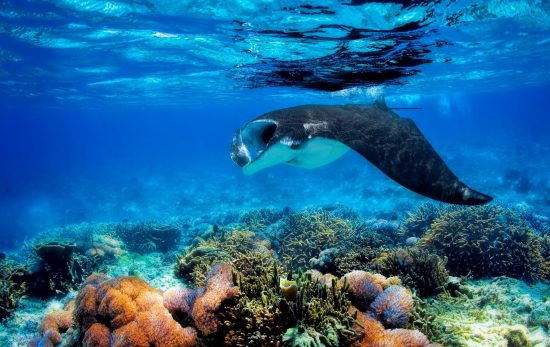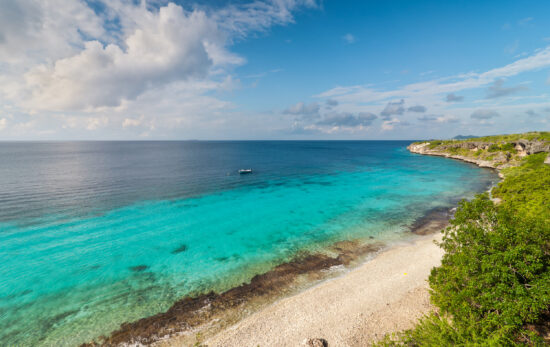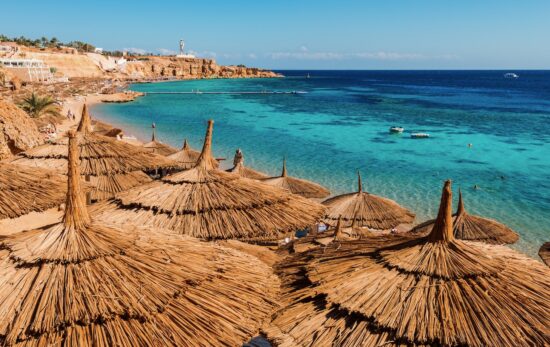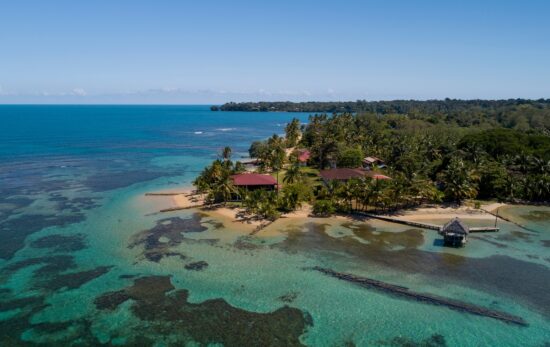Komodo, Indonesia is famous for its iconic dragons; but if you’re a scuba diver, there’s a lot more to see.
Komodo diving is exceptional year-round, but certain times of year are better than others depending on what animals you want to see. For example, if above the surface you have your heart set on seeing a Komodo dragon, avoid visiting during nesting season (August – September) because the dragons are harder to spot during this time.
Komodo National Park is part of the Coral Triangle, home to more than 2,200 different types of fish and 76% of the world’s coral species. Originally founded in 1980 to protect the Komodo Lizard (aka the Komodo dragon), the park’s boundaries were extended from 72,000 ha (287 sq. miles) to 219,322 ha (846 sq, miles) to protect the area’s precious marine life as well. Komodo National Park now includes three major islands, Komodo, Padar and Rinca, and more than two dozen smaller islands. In 1991, Komodo became a UNESCO World Heritage Site.
Komodo Island Diving
Decades of protection and nutrient-rich currents make Komodo a true paradise for divers. Here are just a few of the amazing animals you can see while diving Komodo Island:
- Friendly hawksbill and green sea turtles
- Several different kinds of sharks, including hammerheads
- Manta rays
- Dugongs
- and the Pikachu nudibranch!
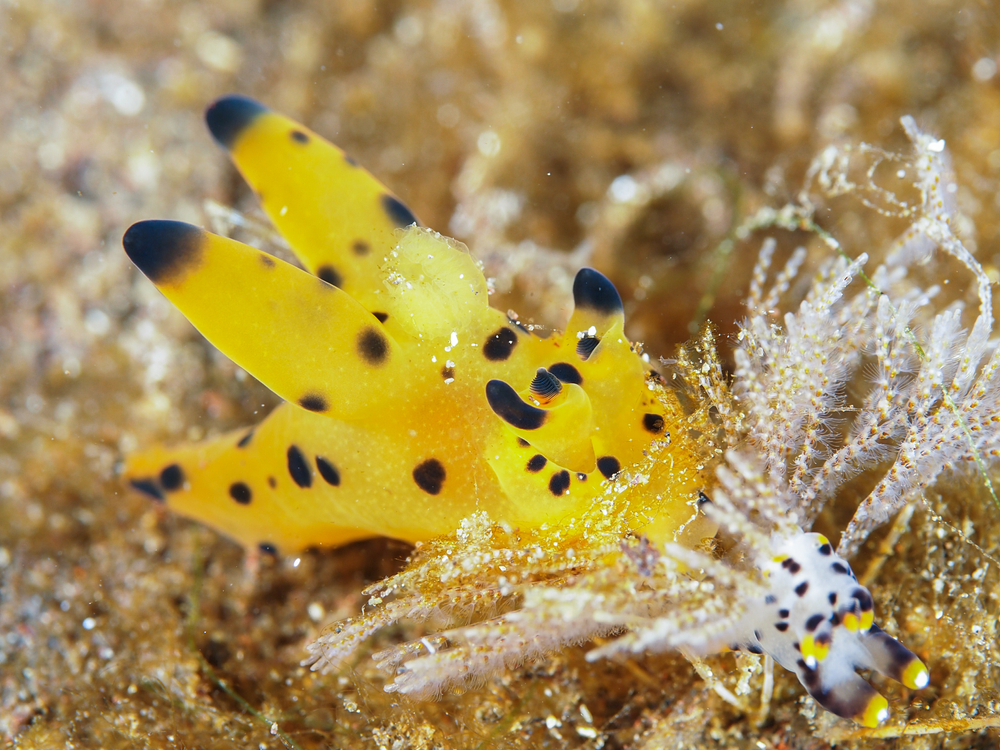
What did you see on your trip to Komodo? Dragons and deer? Hmph… guess you’re not a diver. 😉
One of the best ways to explore Komodo’s underwater wonderland is on a liveaboard boat. In fact, liveaboards are the only way to dive the remote southern areas of the park. Komodo Island liveaboards run year-round and many include a day trip to see Komodo dragons.
The Best Times of Year to Dive Komodo
Below is a month-by-month breakdown to help you choose the best time of year to dive Komodo based on your interests and travel preferences.
January Through March
If you’d like to dive Komodo’s southern dive sites or are keen to see a manta ray, plan your dive trip for January or February. This time of year, visibility is at its best, 30m/100ft+. Unfortunately, it’s also the rainy season. Remember to pack rain gear for topside adventures.
April: Possibly the Best Month to Dive Komodo
Some say April is the best time to dive Komodo Island. The rainy season has passed, the hills are green and it’s still a good time to see manta rays. There are also fewer visitors compared to other times of year.
April is a good time of year to see Komodo dragons. The giant lizards are less active during the rainy months; but in April, the dry hot sun draws them out.
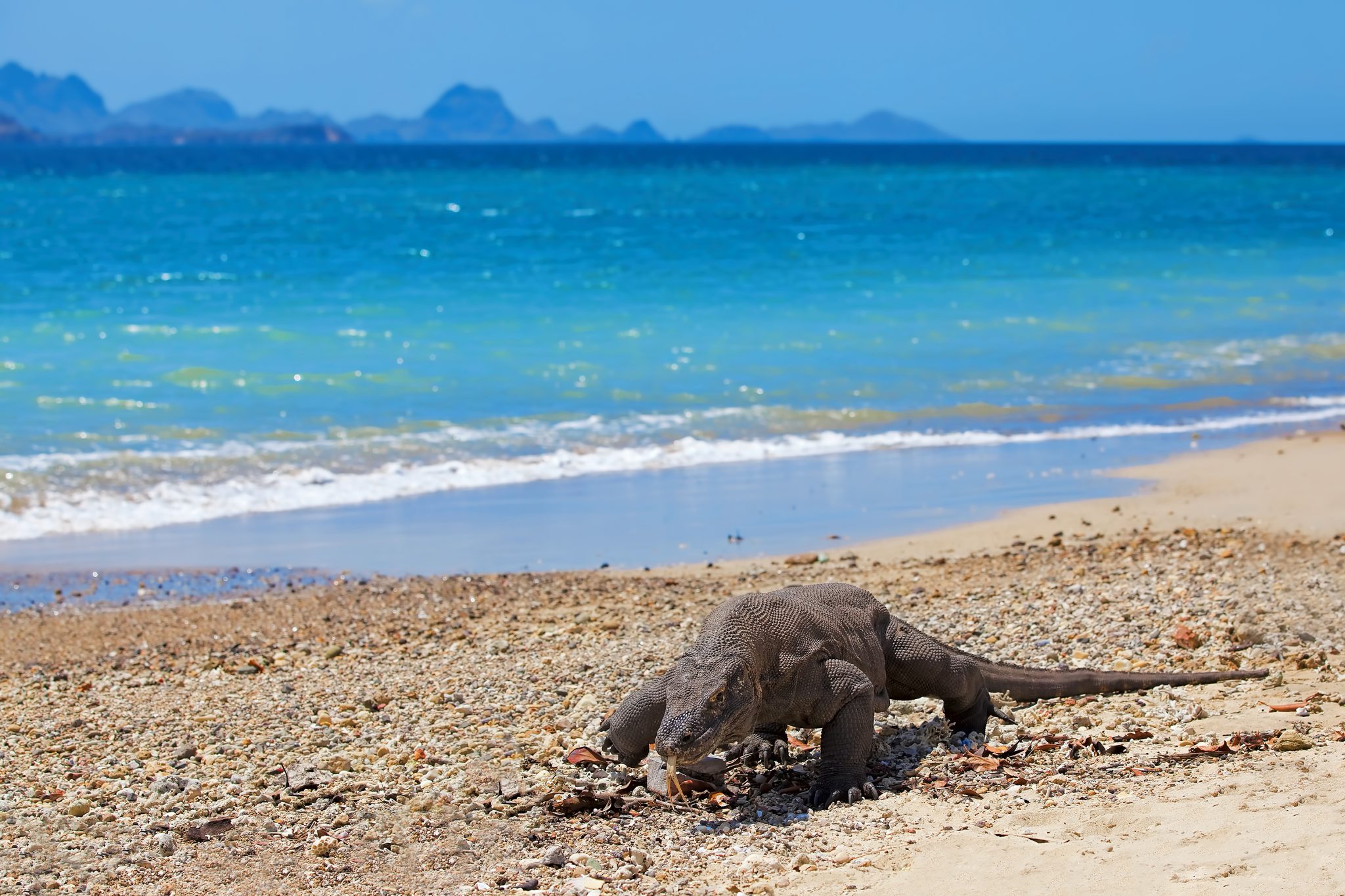
May and June
The dry season is in full swing which means there’s little rain, the seas are calm and the dragons start looking for that special someone. While it’s possible to see a manta ray any time of year in Komodo, it’s less likely during May and June as the mantas head south for cooler water and more plankton.
June through August is peak tourist season. You’ll have many liveaboard boats to choose from, but dive sites (and the park overall) will be more crowded compared to other times of year.
July and August
As mentioned above, there are fewer manta rays in the central and northern parts of the park. Visibility drops slightly as the water becomes more nutrient-rich. Conditions can be rough at the southern dive sites. On the plus side, August is one of the best times of year to see mola mola (also known as the ocean sunfish).
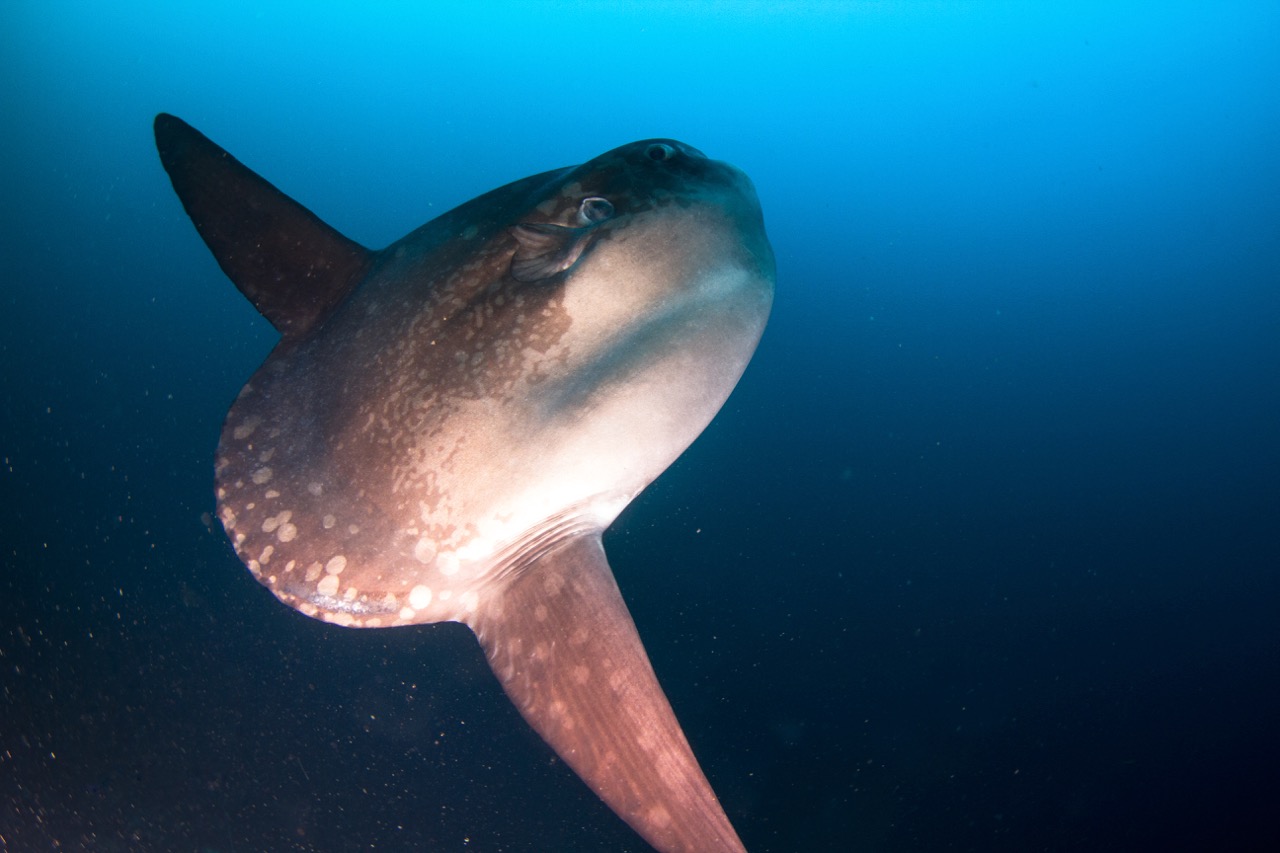
September through November
Crowds thin out and manta rays return to central Komodo (usually around October). There’s also a chance of seeing sperm whales.
Nesting season for Komodo dragons begins in September and runs through November, which means there are fewer dragons about. Female Komodo dragons spend a substantial amount of time guarding their nest.
Komodo Diving in December
December is one of the best times of year to see both Komodo dragons and manta rays. The rainy season can start in December, but rain is less common out on the water compared to on land. Visibility is typically very good, (30m/100ft+) and the southern dive sites are more accessible.
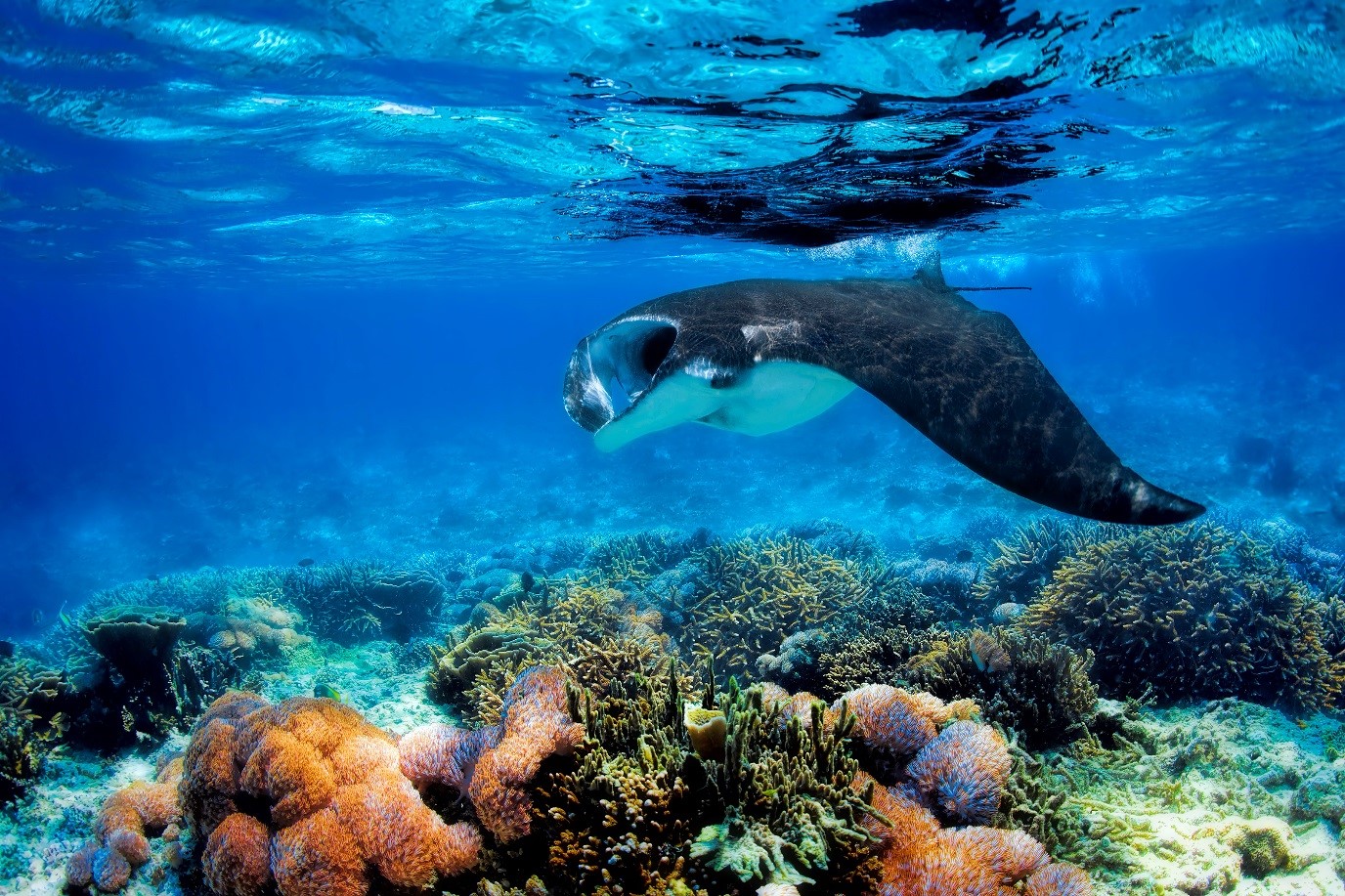
How To Get To Komodo Island
Labuan Bajo (LBJ) is Komodo’s local airport. Most people fly in from either Bali or Jakarta. There are also ferries and speedboats which depart from Sape and boats which travel from other islands in Indonesia like Lombok.
You can arrange diving once you arrive on island, but less-experienced divers should consider contacting a dive shop in advance. Some dive sites in Komodo have strong currents and are only recommended for experienced divers. Communicating your diving preferences before you arrive can help you avoid dive sites where you may feel uncomfortable or unprepared.
Have questions? Need advice? Contact the experts at PADI Travel® for more information or assistance booking your trip.

